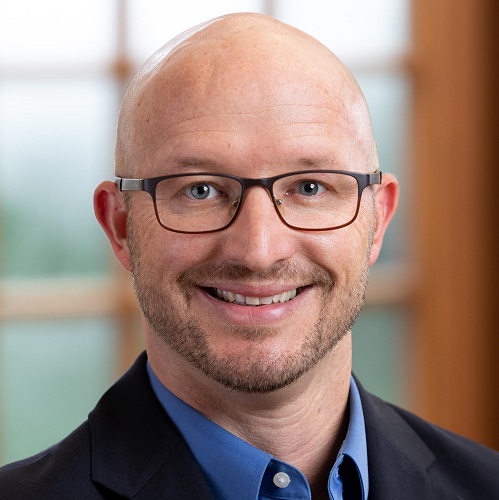Commentary on Hebrews 9:11-14
This week’s passage opens with the conjunction de (“but”), marking a transition to the discussion of the location and nature of Jesus’ priestly work. The text says that Christ “came as high priest.” In Hebrews 9:11, the verb has the sense of making a public appearance. Just like how John the Baptist appeared publicly as the leader of a prophetic renewal movement (Matthew 3:1), Jesus has appeared to fill the role of high priest.
The broader context indicates that Jesus made this appearance as high priest only after his resurrection and did so in heaven. It could not occur while he lived on earth, since the law prescribed a priesthood to which he did not belong (8:4). Instead, Jesus appears as high priest when he enters through “the greater and perfect tent” (9:11). Later, the author explicitly identifies the location of this entrance as “heaven itself” (9:24).
The author contrasts the “greater and perfect tent” with one that is made with hands (cheiropoiētos) and is of this creation (9:11). The word cheiropoiētos is used often to describe the construction of temples (see Mark 14:58). In Acts, the word is used polemically to differentiate the dwelling place of the “Most High God” from other, lesser deities (see Acts 7:48; 17:24).
The author’s persistent use of the word skēnē (“tent” or “tabernacle”) instead of hieron (“temple”) has been the subject of discussion among scholars. Some have suggested that the author’s deliberate use of “tent” is a conscious choice in light of the destruction of the Jerusalem Temple in 70 CE. Since the Temple is no longer standing, the author must make a comparison with the earlier mobile tent of the wilderness period. Others suggest the preference for “tent” has less to do with whether or not the Jerusalem Temple is still standing and more to do with the broader theme of pilgrimage in Hebrews.
As highlighted by Ernst Käsemann’s pioneering study, The Wandering People of God, the author of Hebrews imagines the life of faith as a journey. The journey of the Israelites in the wilderness toward the promised land prefigures the journey of Christ-followers to their promised rest (see Hebrews 3:7–4:13). Since priestly services took place in a tent during this earlier time, it would follow that they would take place in a tent during the later time.
Finally, the author’s preference for using “tent” could be related to the biblical tradition, which is more clear in emphasizing God’s approval and design of the tent (Exodus 25:40) while expressing ambivalence about the Jerusalem Temple (2 Samuel 7:4–7; 1 Kings 8:27; Isaiah 66:1–2).
Having specified the location where Jesus appears as high priest, the remainder of our text centers on the manner of Jesus’ entrance. Once again, the author uses comparison to convey his meaning. First, Jesus entered “once for all” (9:12). The singularity and finality of “once for all” stands in contrast to the continual priestly service in the Holy Place (9:6) and the annual service of the high priest in the Holy of Holies (9:7).
Next, the author says that Jesus did not enter with “the blood of goats and calves” but with his own blood (9:12). The author compares the effects of the sacrificial blood of animals with that of Jesus. The blood of animals sanctifies (hagiazō) the defiled and results in the purification (katharotēs) of their flesh (9:13). The blood of Jesus, in contrast, secures “eternal redemption” (9:12), purifies (katharizō) the conscience from dead works, and results in the worship of the living God (9:14).
The author assumes the logic of sacrifice throughout the comparison. Sacrifice serves as a detergent removing sin and defilement in order to restore communion between God and humanity. Jesus’ blood is superior because it works on the conscience and secures eternal redemption, working once for all.
Jesus’ offering of himself without blemish occurs “through the eternal Spirit” (9:14). Some manuscripts have “Holy Spirit” instead of “eternal Spirit,” reflecting early uncertainty about this irregular phrase. The Greek word pneuma occurs 12 times in Hebrews, including five references to the Holy Spirit (2:4; 3:7; 6:4; 9:8; 10:15). In these verses, the Holy Spirit has a dynamic, animating force that distributes spiritual gifts (2:4; 6:4) and speaks through Scripture (3:7; 9:8; 10:15).
The instrumental use of the preposition dia in 9:14 suggests a similar understanding of the Spirit, even if the adjective “holy” does not modify it. The same Spirit that makes Scripture come alive and animates humans by giving them gifts enabled Jesus to offer himself. This instrumental understanding does not elevate the Spirit to the level of later Trinitarian theology, but it does provide a foundation for such thinking.
Jesus’ self-offering enables those with a conscience cleansed from “dead works” to worship the living God. The same Greek construction for “dead works” occurs in Hebrews 6:1. In both cases, moving away from dead works toward faith in God denotes conversion. In chapter 6, the author speaks explicitly of repentance (metanoia) from dead works and faith in God.
Taken together, the references to dead works in Hebrews 6:1 and 9:14 may be understood generally as acts of sin or, more specifically, as references to pagan religious practices. As with traditions in the Hebrew Bible (Isaiah 40:18–20; 46:1–9) and elsewhere in the New Testament (Acts 14:15; 1 Thessalonians 1:8), the reference to the “living God” in 9:14 implies a contrast with other gods, which are assumed to be “dead” idols.
Much of Hebrews 9:11–14 can be and has been used to support narratives of Christian supremacy. The superiority of Christ’s sacrifice held up in these verses has been used to denigrate not only the Levitical priesthood, but also the whole of Judaism. Similarly, the polemical aspects of this passage can be used to dismiss the convictions and practices of other religious traditions. These aspects of the passage present certain problems for the preacher to consider. One generative way to engage this passage is to ask anew how our hearers may slip into “dead works” and fall away from the living God. Such a move would shift the focus away from those outside our communities of faith to those who reside within them.
What are the idols in our individual and collective lives, and what works do they require of us? How might the Spirit be working to continue to cleanse our conscience so we might more fully worship the living God?


November 3, 2024